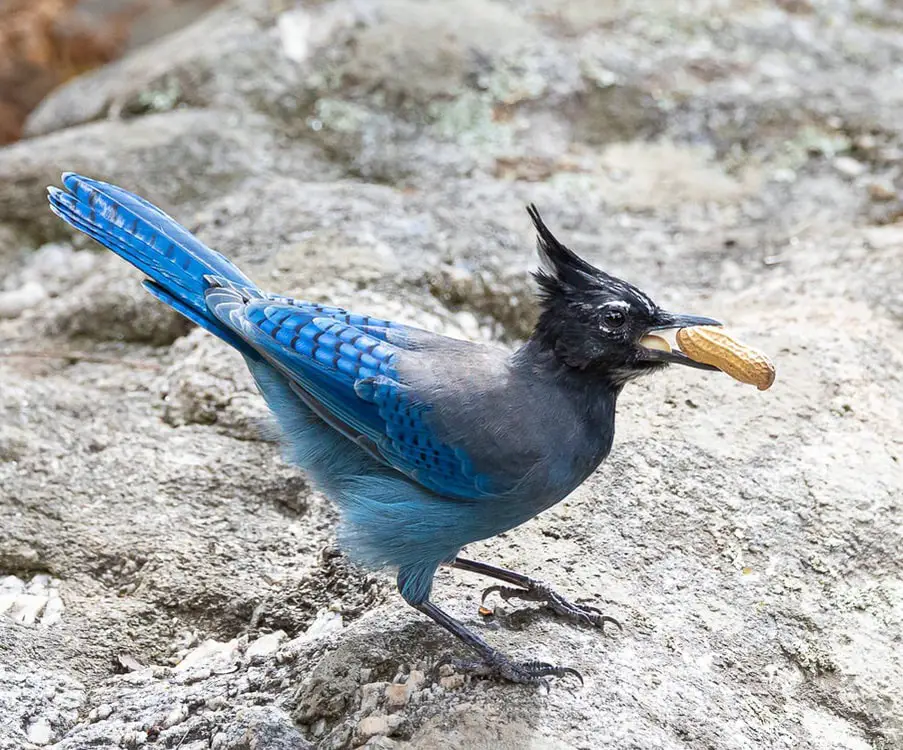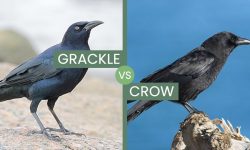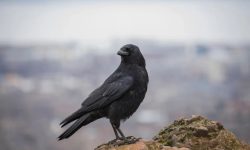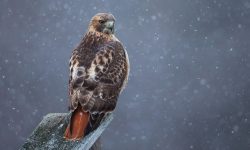The world of birds is rich with colors, sounds, and mysteries. Among the most intriguing subjects in ornithology is the elusive “blue woodpecker.” This term has piqued the interest of birdwatchers, biologists, and nature lovers for decades. Unlike other vividly colored birds, the blue woodpecker’s story is not straightforward. Its existence straddles the line between fact and fiction, legend and science. In this article, we delve deep into the mystery of the blue woodpecker, uncovering its possible origins, exploring habitats where sightings have been reported, and analyzing the behaviors attributed to this enigmatic bird.
The fascination with blue-colored birds is nothing new. From blue jays to indigo buntings, avian species sporting shades of blue are often celebrated for their striking beauty. However, the idea of a blue woodpecker stands out because traditional woodpeckers are generally red, black, white, or a combination thereof. The idea of a woodpecker with blue plumage challenges established norms and invites both skepticism and curiosity.
Is the Blue Woodpecker Real or a Misidentification?

The most fundamental question surrounding the blue woodpecker is whether it truly exists or is simply a misinterpretation of existing species. To date, no officially recognized species of woodpecker is described as entirely or predominantly blue. Most woodpecker species documented in North America, South America, and Asia possess earthy tones, occasionally accented with red or yellow.
One possible explanation for reported sightings of a blue woodpecker is the misidentification of other birds with similar size and behavior. Birds such as the blue jay or the Steller’s jay often display crests and exhibit pecking behaviors that could lead an observer to mistake them for a woodpecker. Additionally, lighting conditions, seasonal plumage changes, and perspective may all contribute to the perception of blue coloration in birds that aren’t actually blue.
Another contributing factor is hybridization or pigment mutations in certain birds. There have been rare instances where individual birds exhibit aberrant coloration due to genetic mutation. While no official case has been recorded of a woodpecker with blue plumage, the possibility of such a mutation occurring cannot be entirely ruled out.
Birds Mistaken for the Blue Woodpecker
Several known species are frequently mistaken for the mythical blue woodpecker due to their coloration and habits. Among them, the most prominent is the Steller’s jay. Native to western North America, this bird sports a brilliant blue body and dark head, often seen hopping along tree trunks or pecking at bark, much like a woodpecker.
Another bird that may contribute to the confusion is the Red-headed woodpecker. While not blue, its vivid red head contrasted with white and black feathers may appear to change under certain lighting, especially during dusk or dawn, casting a bluish hue in photographs or at a glance.
Blue grosbeaks and indigo buntings are also vivid blue birds that frequent wooded areas. Their feeding behaviors and perching styles may occasionally resemble woodpeckers when viewed from a distance. However, upon closer inspection, their beak structure and movement patterns differ significantly from actual woodpeckers.
The Role of Folklore and Local Legends
In some indigenous and rural communities, stories of a “blue woodpecker” have been passed down through generations. These tales often describe the bird as a messenger of change or a sign of good fortune. In such contexts, the blue woodpecker may not represent a literal species but a symbolic figure that embodies natural beauty, rarity, and mystery.
Art and storytelling have long played a role in shaping our understanding of wildlife. Early naturalists relied heavily on descriptions, paintings, and second-hand accounts before the widespread use of photography and field observation. As a result, any bird exhibiting even a faint bluish tint may have been exaggerated in stories and illustrations, contributing to the legend.
This blend of myth and observation creates a unique space for the blue woodpecker—one that lies between reality and imagination. It has captured the imagination of artists and writers, appearing in fictional works and poetic references as a symbol of the wild unknown.
Habitat: Where Are Blue Woodpeckers Reported?
Reported sightings of blue woodpeckers tend to occur in densely wooded areas across North America. Forested regions in the Appalachian Mountains, the Pacific Northwest, and the deep woods of the Midwest are among the most commonly cited locations. These environments are ideal for woodpeckers in general, offering plenty of dead trees and insects.
The confusion often stems from the presence of multiple bird species in these biodiverse regions. Blue-colored birds, combined with a rich population of actual woodpeckers, increase the likelihood of mistaken identity. A quick glimpse of a bird through dense foliage can easily result in the creation of a “new” bird in the mind of the observer.
Sightings have also been reported in parts of South America, where the avian diversity is even greater. Here, birds such as the blue dacnis or the turquoise tanager might be confused for small woodpeckers. Though these birds do not exhibit true woodpecker behavior, their quick, darting movements can be misinterpreted, especially by amateur birders.
Behavior Attributed to the Blue Woodpecker
Based on reported sightings and anecdotal accounts, the so-called blue woodpecker is believed to exhibit traditional woodpecker behavior. This includes tree-pecking to find insects, creating nesting cavities, and drumming to communicate with other birds.
Observers often report hearing rhythmic tapping sounds followed by a flash of blue disappearing into the canopy. These behaviors align closely with known woodpecker species, which are highly active and territorial. The tapping is not random but serves multiple purposes: foraging, nest building, and signaling presence.
Some reports also mention the bird being solitary or found in mated pairs during breeding season. These accounts mirror what is known about woodpecker social structures. Most woodpeckers are monogamous during the breeding season, with both parents involved in nest building and chick rearing.
Scientific Search and Ornithological Studies
Although no peer-reviewed paper has confirmed the existence of a blue woodpecker species, the topic has not gone completely ignored by the scientific community. Ornithologists interested in bird pigmentation and rare species have occasionally referenced reports of blue-feathered woodpecker-like birds in discussion forums, birding journals, and local publications.
There have been small-scale expeditions and field surveys intended to investigate claims, especially those tied to recurring sightings in specific regions. However, these efforts have yet to produce definitive photographic or genetic evidence. Without such evidence, the bird remains a topic of speculation rather than confirmation.
The field of ornithology continues to evolve with the advent of high-definition cameras, drones, and audio recording technology. As more birders upload data to citizen science platforms like eBird, the chances of authenticating rare sightings increase. If the blue woodpecker does exist, it may only be a matter of time before solid proof emerges.
Blue Pigmentation in Birds: A Scientific Overview
Understanding why blue coloration is rare in woodpeckers begins with the biology of feather pigmentation. In birds, blue coloration is not created by pigments but by microscopic structures in the feathers that scatter light. This is known as structural coloration. When light hits these structures, only the blue wavelengths are reflected back, giving the feathers their appearance.
Woodpeckers, by evolutionary design, have not typically developed these microscopic structures. Their feathers rely more on melanin for strength and coloration, which results in the black, brown, and white tones we commonly associate with the group. Producing structurally blue feathers would require genetic adaptations not currently present in any known woodpecker lineage.
However, nature is full of surprises. Instances of leucism (partial loss of pigmentation) or abnormal feather growth occasionally lead to unexpected coloration in individual birds. It is not impossible that a one-off case of structural blue coloration could occur, though it would be incredibly rare.
The Appeal of Rarity in Birding
Birdwatching is as much about discovery as it is about observation. The very idea of spotting something unknown or undocumented brings a sense of adventure to the hobby. The blue woodpecker represents the ultimate find—something elusive, beautiful, and just out of reach.
Reports of rare birds generate excitement and draw crowds of birders hoping to catch a glimpse. In some cases, these gatherings result in the discovery of entirely different rare species. The search for the blue woodpecker, even if it ends without proof, still contributes to broader birding knowledge by encouraging exploration and documentation.
From a psychological standpoint, the human brain is prone to pattern recognition. When we expect to see something rare or extraordinary, we may interpret ambiguous stimuli in a way that aligns with those expectations. This phenomenon, known as confirmation bias, could partly explain the persistence of blue woodpecker sightings.
Cultural Representations and Symbolism
The blue woodpecker has made its way into popular culture, albeit subtly. In literature and visual arts, it is often used as a symbol of hidden beauty or the unknown. Artists have portrayed it as a guardian of ancient forests, a guide in dreams, or an omen of transformation.
Even though it lacks scientific verification, the bird serves an emotional and aesthetic purpose. It bridges the gap between the natural and the mythical, reminding us that nature is not only what we observe but also what we imagine. It challenges our understanding of reality and invites curiosity.
The symbolic role of birds in human culture is profound. From doves of peace to owls of wisdom, each bird carries meaning. The blue woodpecker, with its ambiguous status, fits seamlessly into this tradition, embodying the allure of the undiscovered.
Could a New Species Still Be Discovered?
Modern science has documented over 10,000 bird species, yet discoveries continue. Dense rainforests, remote islands, and isolated mountain ranges still harbor unknown fauna. The idea that a new species of woodpecker with blue coloration could exist is not entirely far-fetched, especially if it inhabits a limited or inaccessible habitat.
Many bird species remain underdocumented due to their remote locations or cryptic behavior. It’s entirely possible that a species could have gone unnoticed due to similarities with other birds or because it exists in very low numbers. Conservation challenges and deforestation may also limit chances of discovery before extinction.
Organizations dedicated to biodiversity are increasingly turning to environmental DNA (eDNA) sampling to detect species presence from soil, water, or air samples. This non-invasive technique could one day reveal traces of a previously undocumented woodpecker, potentially validating the blue woodpecker myth.
Conclusion: Myth, Mistake, or Miracle?
The blue woodpecker remains one of the most intriguing mysteries in modern birdwatching. While science has not confirmed its existence, the consistent reports, cultural stories, and potential for genetic anomalies keep the question alive. Whether it turns out to be a case of mistaken identity, a rare mutation, or an undiscovered species, the legend of the blue woodpecker serves an important role in fueling curiosity about the natural world.
In a time when biodiversity faces increasing threats, the allure of the unknown can inspire conservation and deeper engagement with nature. The blue woodpecker may not yet perch in the pages of ornithological textbooks, but it firmly occupies a place in the hearts and imaginations of those who seek wonder in the wild.






